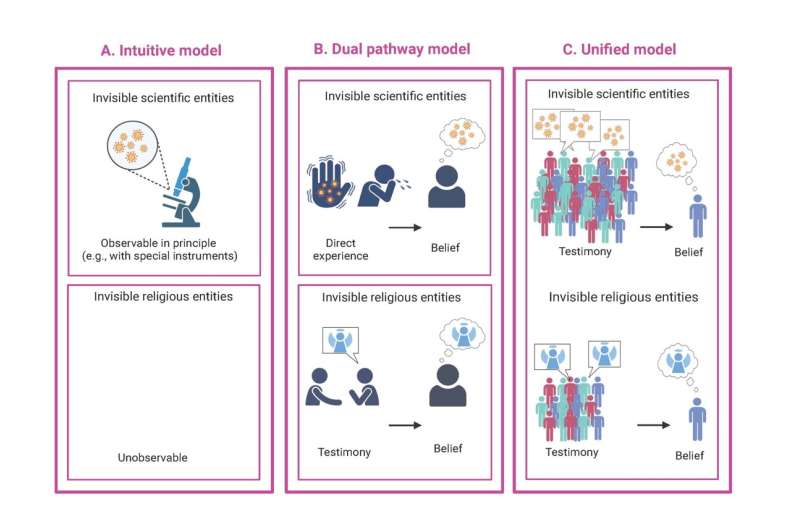
An international research team led by the Hong Kong University of Science and Technology (HKUST) has uncovered in a recent research project that people’s beliefs in science and religion are primarily shaped by the words of others, rather than their personal experiences. The study could help enhance public understanding of people’s belief formation in important scientific issues, such as climate change and vaccination.
The team’s findings, realized in collaboration with researchers at Harvard University, Union College, and Massachusetts Institute of Technology, were published in Trends in Cognitive Sciences.
Conventionally, people are generally more confident about the existence of scientific phenomena, like oxygen, than religious phenomena, like God, as it is thought that people can experience oxygen, for instance, while it is harder to observe religious entities on one’s own.
The team, led by Prof. Mary Shaocong MA, a Research Assistant Professor from the Division of Social Science at HKUST, challenged the conventional view. They argued that both scientific and religious beliefs are primarily shaped by testimony or information we get from others, such as experts or our community, rather than personal experience.
The study highlights the decisive role of testimony in forming our beliefs and understanding of the world, contrary to the notion that direct experience is the main driver of scientific belief.
“Even when it seems like we’re experiencing something directly, our understanding is often heavily influenced by what we’ve been told by experts or our community. For example, witnessing a relative falling ill, it’s very hard for a child to detect that viruses cause illness; rather, they turn to others’ testimony, such as parents’ teaching, to understand the causal relations,” says Prof. Ma.
“Recognizing this can help determine the most effective way to communicate scientific information to the public. By highlighting the credibility and consensus of scientific evidence, it is possible to promote greater acceptance and confidence in scientific facts, especially regarding emerging scientific topics, such as climate change.
“This insight is crucial for combating misinformation and enhancing public understanding and support for scientific matters, such as addressing climate change and getting vaccinated,” she further explains.
In the research, by reviewing empirical evidence in the past few decades, the team proposed a theoretical model that explains how people come to believe in the existence of invisible entities, such as germs in science or God in religion.
For example, it finds that people believe in germs because doctors and scientists tell us they exist, even though we cannot see them with our own eyes. Likewise, we infer that people get sick because of germs by learning this causal relation from others rather than discovering this connection through personal observation.
The model also establishes that the more credible the source of the information and the more people who agree with it, the more likely people are to believe it. “If many people around us agree that climate change is real, their consensus strengthens our belief in these concepts,” she says.
It shows that people’s confidence in these phenomena is not because they have seen them directly but because they trust the sources that tell them about them.
Unlike previous models that proposed separate pathways for belief formation in science and religion, this model provides a unified explanation. It argues that others’ testimony, rather than direct experience, predominantly shapes beliefs in both domains.
More information:
Shaocong Ma et al, Scientific and religious beliefs are primarily shaped by testimony, Trends in Cognitive Sciences (2024). DOI: 10.1016/j.tics.2024.04.014
Provided by
Hong Kong University of Science and Technology
Citation:
Others’ words, not firsthand experience, shape scientific and religious belief formation, study finds (2024, June 4)
retrieved 29 June 2024
from https://phys.org/news/2024-06-words-firsthand-scientific-religious-belief.html
This document is subject to copyright. Apart from any fair dealing for the purpose of private study or research, no
part may be reproduced without the written permission. The content is provided for information purposes only.




